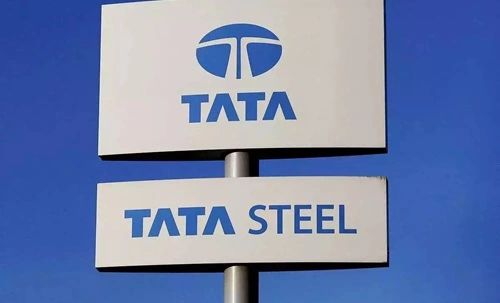Tata Steel, one of the world’s leading steel manufacturers, is a flagship company of the Tata Group, with a rich history dating back to its establishment in 1907. Headquartered in Mumbai, India, Tata Steel operates across 26 countries, with major production hubs in India, Europe, and Southeast Asia. As of 2024, Tata Steel remains one of the largest steel producers globally, renowned for its high-quality products, commitment to sustainability, and diversified operations.
This article delves into Tata Steel’s business model, revenue streams, and strategies that make it a leader in the global steel industry.
Overview of Tata Steel’s Business Model

Tata Steel operates on a B2B (Business-to-Business) and B2C (Business-to-Consumer) business model, catering to industries such as construction, automotive, infrastructure, energy, and consumer goods. It has a vertically integrated business model, controlling the entire steel manufacturing process—from raw material extraction to finished product delivery.
Key Features of Tata Steel’s Business Model:
- Vertically Integrated Operations:
- Tata Steel owns iron ore, coal, and limestone mines, ensuring control over raw material supply and cost efficiency.
- Global Production Network:
- With manufacturing facilities in India, the UK, the Netherlands, and other countries, Tata Steel caters to global markets.
- Diverse Product Portfolio:
- The company produces flat and long steel products, alloys, and value-added steel for various applications.
- Sustainability Focus:
- Tata Steel integrates sustainable practices into its operations, including the use of low-carbon technologies and circular economy initiatives.
- Technology and R&D:
- Advanced manufacturing technologies and continuous investment in R&D drive innovation and efficiency.
How Does Tata Steel Earn Money?
Tata Steel generates revenue from a variety of streams, leveraging its extensive operations, product portfolio, and global footprint. Here’s how it earns money:
a. Sale of Steel Products
- Core Revenue Driver:
- Tata Steel’s primary revenue source is the sale of steel products, which include:
- Flat Products: Sheets, plates, and coils used in automotive, construction, and white goods industries.
- Long Products: Rebars, wires, and structural sections used in construction and infrastructure.
- Value-Added Products: High-strength and corrosion-resistant steel for niche applications.
- Tata Steel’s primary revenue source is the sale of steel products, which include:
- These products are sold to industries like automotive, construction, packaging, and energy.
b. Mining and Raw Material Sales
- Tata Steel owns and operates its own iron ore, coal, and limestone mines, significantly reducing raw material costs.
- In addition to internal use, Tata Steel sells surplus raw materials to other industries, generating additional revenue.
c. Automotive Steel
- Tata Steel supplies specialized steel products to the automotive industry, including lightweight, high-strength steel for vehicles.
- It has partnerships with major automakers like Tata Motors, Maruti Suzuki, and Hyundai, earning revenue through long-term supply contracts.
d. Construction and Infrastructure Projects
- The company provides steel solutions for large-scale infrastructure and construction projects, including bridges, railways, and high-rise buildings.
- Tata Steel’s Tata Tiscon, a brand for rebars, is one of the most trusted names in the construction industry.
e. Consumer Steel Products
- Through its B2C segment, Tata Steel sells branded consumer products like:
- Tata Tiscon rebars for home builders.
- Tata Shaktee corrugated sheets for roofing.
- Tata Kosh galvanized sheets for small-scale applications.
- These products are marketed directly to end consumers, particularly in rural and semi-urban markets.
f. Exports
- Tata Steel earns significant revenue through exports, supplying steel products to markets in Europe, Southeast Asia, the Middle East, and Africa.
- Exported products include hot-rolled coils, cold-rolled sheets, and galvanized steel.
g. Recycling and Scrap Processing
- Tata Steel has ventured into steel recycling, sourcing scrap and converting it into high-quality steel. This business aligns with the company’s sustainability goals and generates revenue from the sale of recycled products.
h. Engineering and Industrial Solutions
- Tata Steel provides customized engineering and industrial solutions, including pre-fabricated steel components, modular structures, and specialized alloys for machinery and tools.
i. Diversification into New Materials
- The company has expanded into non-steel materials, such as graphene, composites, and advanced ceramics, targeting high-tech industries like aerospace and renewable energy.
j. Digital and Smart Solutions
- Tata Steel leverages IoT and AI to offer smart solutions like supply chain optimization, predictive maintenance for steel plants, and real-time tracking for customers. These services are monetized through subscription fees or as part of bundled offerings.
Why Tata Steel’s Model Works
Tata Steel’s business model thrives on operational efficiency, product diversity, and a strong focus on sustainability and innovation. Here’s why it works:
a. Vertical Integration
- Owning mines and production facilities gives Tata Steel a competitive edge in cost control, raw material security, and operational efficiency.
b. Global Presence
- Tata Steel’s diversified geographic footprint ensures resilience against regional market fluctuations and access to global demand.
c. Diversified Product Portfolio
- With products catering to multiple industries, Tata Steel reduces its reliance on any single sector, ensuring stable revenue.
d. Sustainability and Circular Economy
- Initiatives like steel recycling, low-carbon technologies, and energy-efficient production align with global sustainability trends, enhancing the company’s reputation and future-readiness.
e. Customer-Centric Approach
- Tata Steel’s focus on branded consumer products and customized industrial solutions ensures strong customer loyalty and market share.
Financial Performance
Tata Steel’s robust business model is reflected in its financial performance.
Revenue Growth
- Tata Steel reported consolidated revenues of over ₹2.5 lakh crores in FY 2023, driven by strong demand in the domestic and international markets.
Profitability
- Despite fluctuations in raw material prices, Tata Steel maintains healthy profit margins due to its cost-efficient operations and high-value products.
Market Position
- Tata Steel is among the top 10 steel producers globally, with a production capacity exceeding 34 million tons per annum.
Challenges and Opportunities
Challenges
- Volatility in Raw Material Prices:
- Fluctuations in the prices of coal and iron ore can impact profitability.
- Environmental Regulations:
- Stricter environmental laws require ongoing investments in clean technologies.
- Global Competition:
- Tata Steel faces competition from global giants like ArcelorMittal and Nippon Steel.
Opportunities
- Green Steel Production:
- Investing in hydrogen-based steelmaking and other low-carbon technologies can open new markets.
- Infrastructure Growth:
- Rising infrastructure spending in India and developing countries offers significant demand for steel.
- Expansion in Recycling:
- Scaling steel recycling operations can cater to environmentally conscious consumers and industries.
- Digital Transformation:
- Offering smart, digital solutions for customers and optimizing supply chains can enhance revenue.
Future Prospects
Tata Steel is well-positioned to capitalize on global trends in infrastructure development, sustainability, and digital transformation. Key focus areas include:
- Increasing its share of green steel through clean energy technologies.
- Expanding its steel recycling operations to align with circular economy principles.
- Leveraging advanced analytics and AI to improve efficiency and customer experience.
- Exploring new markets and applications for innovative materials like graphene and composites.
Conclusion
Tata Steel’s business model exemplifies operational excellence, innovation, and sustainability in the global steel industry. With its vertically integrated operations, diverse revenue streams, and commitment to customer-centric solutions, the company remains a dominant force in the market. As Tata Steel continues to embrace new technologies and sustainable practices, it is well-positioned to meet future challenges and drive growth in the evolving global economy.

